Explainer on Mumbai terror attack case accused Tahawwur Hussain Rana, who is likely to be extradited to India from the US very soon.

Who is Tahawwur Hussain Rana?
Rana, 64, is a Pakistan-born Canadian national and close associate of one of the main conspirators of 2008 Mumbai terror attacks David Coleman Headley alias Daood Gilani, a US citizen.
He was born in Chichawatni city in Sahiwal district of Pakistan's Punjab province.
After pursuing his studies in medicine from a college in Pakistan, he worked in Pakistan Army's medical corps.
Rana migrated to Canada after leaving the Pakistani Army in late 1990s and later got Canadian citizenship.
He started his own business of immigration services provider through his 'First World Immigration Services' venture. Rana then moved to the US and set up office in Chicago.
How did Rana get in touch with Headley?
Security agency officials say Headley, who was born in the US to a Pakistani father and American mother, is Rana's childhood friend.
Some time after his birth, Headley's family moved to Pakistan where he went to a school in Hasan Abdal city in Attock district. This is where Headley befriended Rana.
What is Rana's involvement in the 26/11 Mumbai terror attack case?
The National Investigation Agency registered a case on November 11, 2009 under section 121 A of Indian Penal Code, Section 18 of Unlawful Activities (Prevention) Act and Section 6(2) SAARC Convention (Suppression of Terrorism) Act against Headley, Rana and others.
Headley, a resident of Chicago, Illinois, and Rana entered into a criminal conspiracy with members of Pakistan-based terror groups Lashkar-e-Taiba (LeT) and Harkat-ul Jihadi Islami (HUJI) to commit terrorist acts in New Delhi and other places in India.
A total of 166 people, including six Americans, were killed in the 2008 attacks in which 10 Pakistani terrorists laid a 60-hour siege, attacking people at iconic and vital locations of Mumbai.
In November 2012, Ajmal Amir Kasab, the lone surviving terrorist among the Pakistani group, was hanged to death in Yerawada Jail in Pune.
Investigating agency officials said Rana had assisted Headley in obtaining a visa for India and established 'Immigrant Law Centre' in Mumbai, which acted as a front.
It is alleged that Rana was aware of Headley's terror links and even helped in reconnaissance of targets in Mumbai and planning the attacks on the National Defence College in New Delhi and Chabad House in Mumbai.
Rana also visited Hapur (Uttar Pradesh), Delhi, Agra, Kochi, Ahmedabad, and Mumbai in the country with his wife Samraz Rana Akhtar between November 13 and November 21, 2008. His initial planning includes the attack on Chabad Houses located in different cities.
Headley had gone to the US and met Rana in June 2006 where they discussed their future action plan, the officials said.
Rana also remained in contact with Major Iqbal, another co-conspirator of the 26/11 carnage.
During his first visit to India, Headley spoke to Rana over phone more than 32 times. Subsequently, Headley spoke with Rana 23 times during his second visit, 40 times during the third visit, 37 times during the fifth visit, 33 times during the sixth visit and 66 times during the eighth visit, officials said, explaining his active involvement in the Mumbai attack conspiracy.
What's next after Rana's extradition?
Probe agency officials said Rana is likely to be kept in NIA's custody after due legal process for further questioning to ascertain the role of Pakistani state actors behind the 26/11 attacks. His interrogation may shed new light on the investigation.
Officials are also believed to be exploring the option of keeping him in a highly-secured cell of Tihar prisons.
His extradition from the US could also provide important leads into his travels in parts of northern and southern India days before the carnage in 2008, they said.
During the investigation, the roles of senior Lashkar-e-Tayiba and Harkat-ul-Jihad al-Islami functionaries namely Hafiz Muhammad Saeed alias Tayyaji, Zaki-ur-Rehman Lakhvi, Sajjid Majid alias Wasi ,Illyas Kashmiri and Abdur Rehman Hashim Syed alias Major Abdurrehman alias Pasha in the attack case have emerged.
They were working in active connivance and assistance from ISI officers namely Major Iqbal alias Major Ali, Major Sameer Ali alias Major Samir, all residents of Pakistan, the officials said.
The NIA special court, Patiala House has issued non-bailable warrants against all the accused persons.
Headley and Rana were arrested by law enforcement agencies in the US in their case. Consequent upon the request of the NIA, the Interpol, CBI issued red notices against the remaining seven absconding accused persons.
NIA had also sent extradition requests to the US for extradition of Headley and Rana. A letters rogatory (letter of request for assistance in investigation) has been furnished to Pakistan as well and their reply is said to be awaited.
The NIA, after completion of its investigation, filed charge sheet before the court on December 24, 2011 against all the accused under sections 120 B (criminal conspiracy), read with 121, 121A, 302, 468 and 471 Indian Penal Code and sections 16,18 & 20 of Unlawful Activities (Prevention) Act.
The punishment for criminal conspiracy depends upon the nature of offence which is the object of the conspiracy.
A convict can be sentenced to death penalty or life imprisonment if the conspiracy involves offences like murder punishable with death or life term.
A Delhi court had earlier this year sought the trial records of the 26/11 terror attack from a Mumbai court.
The order came on a plea of the NIA , seeking the retrieval of the records from Mumbai.
The trial court records were previously sent to Mumbai due to the presence of multiple cases related to the 26/11 attacks in both cities.
Why and where in the US is Rana now?
Rana is currently lodged at a metropolitan detention centre in Los Angeles.
The Federal Bureau of Investigation (FBI) of the US arrested Rana in Chicago a year after the attacks in October 2009 for providing support for an aborted plan to attack a newspaper in Copenhagen (Denmark) and providing material support to LeT. However, Rana was acquitted of conspiracy to provide material support to the Mumbai terror attacks.
Rana was convicted in 2011 in that case and sentenced to 14 years.
Why and how Rana's extradition would be processed?
India has been trying to extradite Rana for many years because of his association with LeT and HuJI, Headley and his active involvement in the Mumbai attacks.
Rana has now exhausted all his legal options available to such subjects in the US and would soon be brought to India to face the law.
A multi-agency team from India has gone to the US and all paperwork and legalities are being completed with the authorities there, sources said.
During a joint press conference with Prime Minister Narendra Modi in the White House in February, US President Donald Trump announced that his administration has approved the extradition of "very evil people of the world" Rana "to face justice in India".
Rana's extradition was first cleared by the US Supreme Court in January as it rejected his review petition in the case.
Rana submitted an 'Emergency Application For Stay Pending Litigation of Petition For Writ of Habeas Corpus' on February 27, 2025, with Associate Justice of the US Supreme Court and Circuit Justice for the Ninth Circuit Elena Kagan. Kagan denied the application last month.
Rana then renewed his 'Emergency Application for Stay Pending Litigation of Petition for Writ of Habeas Corpus previously addressed to Justice Kagan', and requested that the renewed application be directed to US Chief Justice John Roberts.
An order on the Supreme Court website noted that Rana's renewed application had been "distributed for Conference" on April 4 and the "application" has been "referred to the Court."
A notice on the Supreme Court website on April 7, said, "Application denied by the Court", thus paving the way for his imminent return to India to face the trial.
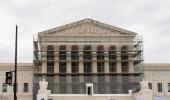
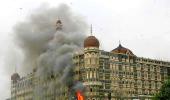
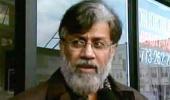

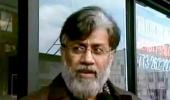



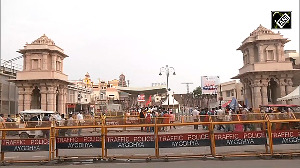

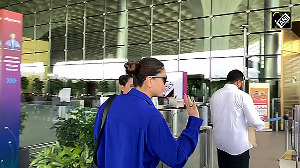
 © 2025
© 2025